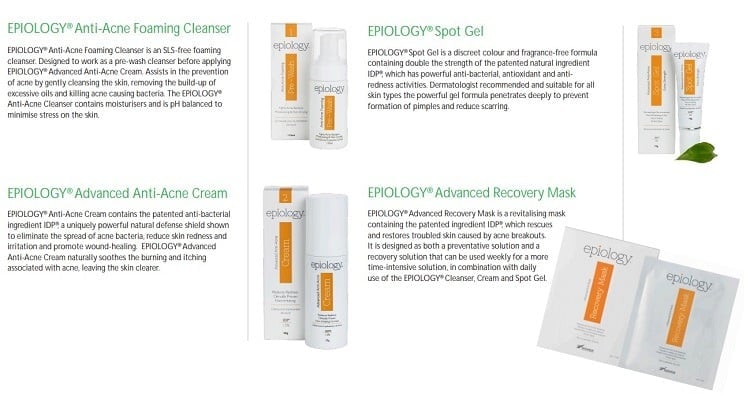Quantec’s Immune Defense Proteins Do a Body Good
Table of contents

Drive around New Zealand for a while and you’ll start to notice a few things that stand out. Firstly, people are really nice. In fact, they’re so nice that they won’t let you know that you’re pronouncing just about every town and street name incorrectly. Secondly, there’s lots of grass everywhere which people often like to park their cars on. And thirdly, dairy is big business in New Zealand – the world’s largest exporter of dairy products and the 8th largest milk producer worldwide. (Incredibly, this small island nation of 4.8 million people manages to produce 3% of the world’s milk.)
We naively envisioned cows churning out milk into cartons which made their way onto grocery store shelves, but that’s a very small part of what milk is used for. Here’s a breakdown of what products come out of New Zealand’s national herd of more than 4.8 million dairy cows that represented 39% of export revenues in fiscal 2019:
When you’re so into milk you decide to do a PhD thesis on it, New Zealand is a prime place to relocate. That’s what American Rod Claycomb did back in 1999 when he came to New Zealand and became the founding CEO of SensorTec, which developed and commercialized sensor technologies for the measurement of biological components in milk. After leaving his first venture, he went on to co-found a second company around milk – Quantec.
Immune Defense Proteins (IDP)
Founded in 2008, Hamilton, New Zealand startup Quantec has taken in more than $2 million in investor funding to develop IDP, a patented formulation based on milk bioactive proteins that’s extracted from pure natural milk. (It takes about 2.64 gallons of milk to get 0.03 ounces of IDP – or 10 liters to get one gram.) First discovered in 2005 by Dr. Claycomb’s co-founder, Dr. Judy Bragger, and patented the same year, IDP contains more than 58 different proteins and is produced by the cow as a defensive shield against infection and inflammation, protecting both the mother and the calf. Fast forward to today and they’re a well-established, growing, and profitable organization, all based on its IDP technology, with traction in different markets. With a tenured CEO on board, the team is focusing heavily on R&D through to commercialization and a growing sales team.
Dr. Claycomb described to us just how they extract IDP from milk using fractionation, something that he’s a bit of an expert having led the team that developed the world’s first on-farm milk fractionation robot. It’s now a process protected by global patents, and IDP is being targeted towards three geographically and functionally diverse applications, each with some serious potential behind it. The one we want to focus on first is perhaps the most interesting because it involves selling nutritional products to the 350 million Chinese consumers who buy them today. The direction is clear in Quantec’s marketing collateral which has all been localized for the Chinese nutrition market.

The Chinese Nutrition Market
Spend some time living among the Chinese and you’ll quickly start to notice that you’re not in Kansas anymore. If there are ghosts in your house, expect to lose about 30% of the property’s value. And don’t think you can sweep that ghost under the bamboo mat. You are legally obligated to tell buyers if your house has ghosts (usually this involves some death that occurred on or near the property). Signing up for health insurance at your place of employment is also handled differently. The first big choice to make is whether you want Western Medicine or Chinese Medicine.
If you don’t know anything about Chinese medicine, just walk into one of the many Chinese pharmacies around and see how complex the practice is for yourself. With more than 13,000 medicinal ingredients, Traditional Chinese Medicine (TCM) has been used for the past 3,500 years by the Chinese who are now the most commonly found humans on the planet. (One in five people on this planet is Chinese, a statistic that throws a monkey wrench in whatever D&I strategy Gwyneth from HR has been wasting her time on lately.) TCM isn’t backed by any science, yet it seems to work remarkably well, and everyone uses it.

These are just a few examples of a fascinating alternative belief system that the Chinese have held for centuries, and one that considers lactoferrin to be a super-ingredient.
Lactoferrin is a protein with antibacterial properties that’s found in milk. It’s also one of the proteins found in the ingredient IDP. After nearly a decade of figuring out the optimal way to conduct business with the Chinese, Quantec managed to achieve success. Just this year, they inked a 20-year contract with Chinese mother-baby distributor Holon which can sell to about 20,000 stores. Quantec products can be found in about 8,000 of them today. Much of what needs to be done now is to educate the Chinese on the value of IDP which means speaking to them in conferences and workshops in person. In a market like China, personal sales pitches are extremely effective.
Figuring out total addressable market (TAM) for this segment is tough, but a report by Roland Berger talks about the historical growth of China’s nutrition market – 13% compound annual growth from 2005 to 2015 – and the future growth potential. The same report says you need three things to succeed in the Chinese nutrition market:
- Enhance product influence and brand power
- Develop insights into sales channels
- Seek international collaboration
Those three things are exactly what Quantec has managed to do. The Silver Fern brand sells very well in China, and they make up more than 30% of New Zealand’s dairy exports. Now, Quantec can easily sell other nutritional products to the Chinese. They can also sell other variations of their own product, like skincare cream with IDP that helps acne.
Skincare Products for Acne
Again, our story involves both serendipity and hustle. When Quantec completed their clinical studies showing that IDP could be used to effectively address acne, they developed their own skincare product line under the brand name “Epiology” and opted out of selling into bureaucratic environments like ‘Murica, instead settling on Mexico as their first market. Turns out the demand for skincare products in the Mexican market happens to be much stronger than many other geographies, and the rules and regulations allow for acne skincare products to be marketed without as many regulatory hoops to jump through.

Using IDP as an active ingredient in skincare products means high margin and low risk since someone else deals with distribution and sales. While Mexico is their biggest market, they’re actively expanding into Latin America now. (For our American readers, Latin America consists of all countries south of the border that don’t speak American.) There’s also a huge demand for skincare products in Latin American countries, and now they’re looking to duplicate the success they’ve had in Mexico. If Quantec manages to make it down to Brazil, the world’s fourth-largest producer of dairy products, maybe they can also look to market their third product category.
Curing Mastitis
The last application is equally exciting, and hits close to home for New Zealand’s dairy farmers. During our time in New Zealand, we quickly learned about mastitis, the bane of any dairy farmer who wants to maximize production for their herd. Simply put, mastitis is an infection of the cow’s udder that happens when it returns to the field and lives on grass between milkings. Here’s a diagram showing the anatomy involved.

Applying a spray to a cow’s teats has been the foundation of mastitis control systems for the past 40 years, and it’s about time for some innovation in this space. Since mastitis is probably the single biggest concern for most dairy farmers, a great deal of work goes into testing the milk output to quickly catch and rectify cases. It’s a business of its own, and Dr. Claycomb seems to think that using the cows’ own IDP, he may be able to dramatically reduce mastitis which increases dairy production which should ultimately result in mankind being safe from extinction. It’s a win-win.
Conclusion
Meeting with startups that are flying under the radar is like scratching off a lottery ticket. Sometimes you are blown away by what’s actually going on behind the scenes. Quantec is a great example of a company that’s too busy executing to care much about publicity. They’re not overly interested in funding which hints at some high-margin cash flows typical of a commercially viable, well-run company that are fueling growth. At some point, it might make sense for the company to carve itself up into verticals, and perhaps pursue other applications as well. For now, Dr. Claycomb isn’t overly worried about all that. Quantec’s focused on scaling the business to sell a whole lot more product. Wondering whether or not your business can scale production quickly enough is a good problem to have.
Sign up to our newsletter to get more of our great research delivered straight to your inbox!
Nanalyze Weekly includes useful insights written by our team of underpaid MBAs, research on new disruptive technology stocks flying under the radar, and summaries of our recent research. Always 100% free.
















The article says how great IDP is, but I didn’t notice info on how to buy it.
Good question Christine. It’s probably best to contact the company directly as we’re not sure where they’re selling it.